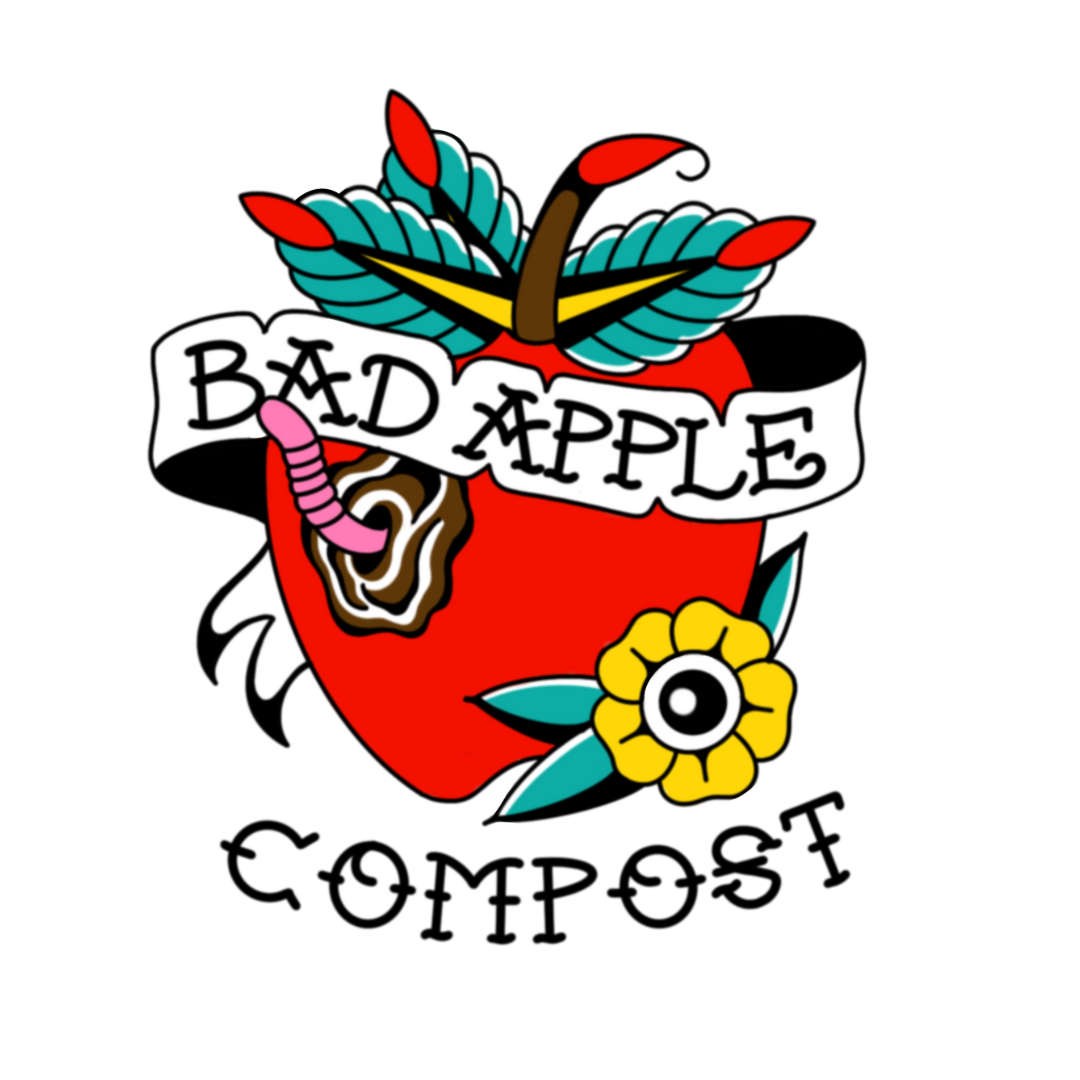
Food is only wasted, if you waste it.
When we compost surplus food, we recover a valuable community resource that can be used to support our ecosystem through agriculture and landscaping.
If it grows, it goes.
Under the right conditions, nearly any animal or plant material can be recycled back into the earth through composting. The Institute for Local Self-Reliance estimates that nearly half of all household waste sent to the landfill is organic matter, much of which could be composted. Imagine the impact we could have on our environment if we starved the landfills and fed the compost piles.
Approved Items for Bad Apple Compost Buckets
All fruit and veggie scraps *NO PRODUCE STICKERS*
Beans, nuts and seeds
Bread, pasta, rice, and other grains
Cake, crackers, cookies and other snacks
Cheese and yogurt
Coffee grounds and filters
Cooked meat (NO bones)
Eggs and eggshells
Loose leaf tea and certified compostable tea bags
Napkins and paper towels (food residue only)
Non-glossy paper and cardboard (NO tape or crayon markings)
Pizza boxes! (NO Pizza Hut - they use plastic in their boxes)
Small plant trimmings, including flowers (NO diseased plants)
Wooden Popsicle sticks, toothpicks
BPI Certified or TUV Compost Certified products (biodegradable is NOT the same as compostable)
Backyard composting
Anyone can recycle organic materials in their own backyard. What you can compost ultimately depends on the system you have in place.
Fruits, coffee grounds, rinsed eggshells and uncooked vegetables are the easiest food scraps to recycle and work well in any system.
Composting cooked food is also possible as long as you can bury it deep enough to prevent scavenging rodents.
Products labeled safe for home composting will breakdown over time in any composting environment. If you use a hot composting system, you could try processing BPI certified compostables as well.
High risk materials, such as raw meat, should only be composted in thermophilic systems designed to kill pathogens.
Remember to incorporate plenty of carbon into your backyard system. Great sources include shredded cardboard and paper, leaves, sawdust, straw, and wood chips.



